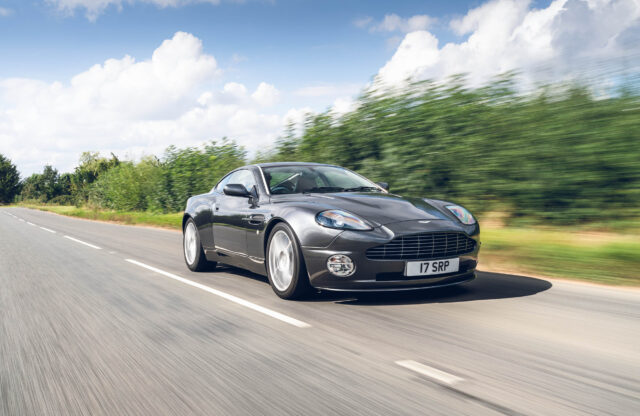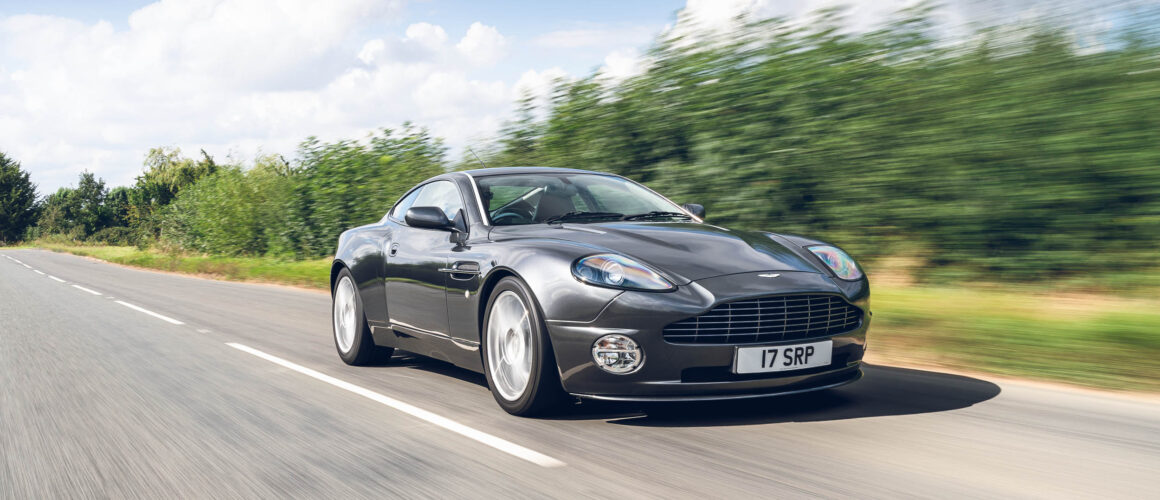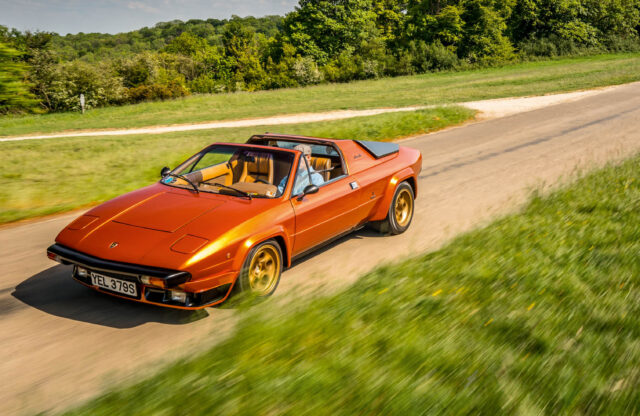As the Aston Martin Vanquish turns 20 years old, join us for a birthday celebration
‘We’d done the DB7, got the company back in a favourable place. Aston Martin’s MD Bob Dover wanted a tougher-looking, modern DB7 and asked for sketches. “There’s no guarantee you’ll get the job,” he told me. Was he bluffing? Well, he’s still a good friend, but he certainly got me on my toes. Anyway, I showed him some ideas. “We’ll do this one here,” he said.’
Sounds simple. Ian Callum’s dulcet Dumfries burr emanates from my phone’s speaker, and the subject matter is the Aston Martin V12 Vanquish. Difficult to believe, but that car is now celebrating its 20th birthday. Two decades have slipped past since it wrested Aston Martin into the modern era, technologically and stylistically, while still being built at Newport Pagnell.
So much has changed since. Yet the visual genes of the current Aston range hark back to this car more than any other. And it’s powered by that venerable 5935cc V12, the one that made its debut in 1999 in the DB7 Vantage and went on to power the DB9, the DBS, Rapide, Vantage and the second-generation Vanquish, and remains in production (albeit shrunken to a 5.2, and boosted by turbos) to propel the current DB11 et al.
So Callum’s Vanquish is an important car. A milestone in Aston Martin history. A proof of concept that everything since refers back to still. Simple, though? Actually, anything but, as it turns out. ‘I was freelance back then, doing work for TWR. Aston Martin didn’t have an R&D or even a design department,’ says Callum. ‘By good fortune, I’d ended up working on the DB7. Bob Dover gave me a job: to develop a replacement for the V-car.’
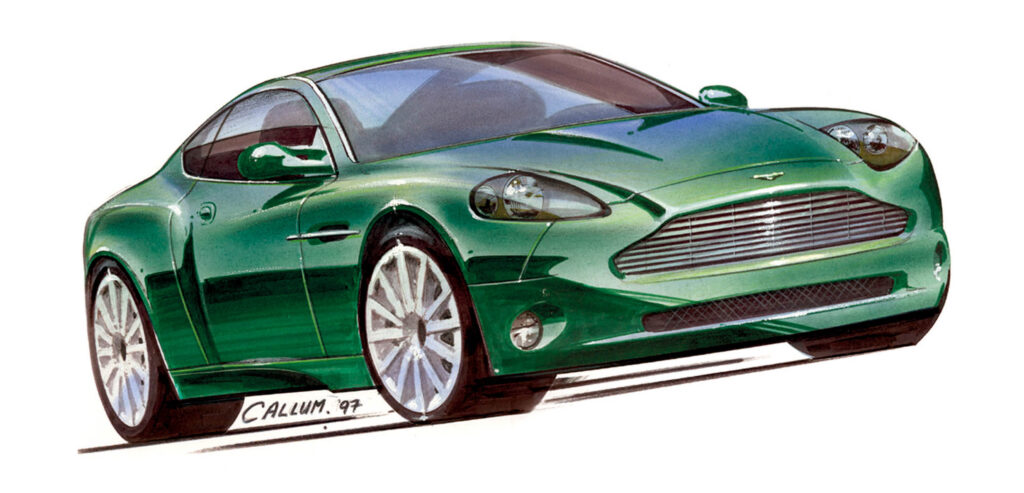
You’ll recall the era. Aston Martin had been part of the Ford empire since 1987, becoming a founder member of its Premier Automotive Group in 1999, along with Jaguar, Land Rover and Volvo. But in the late 1980s it proffered the antediluvian V8 saloon and Vantage, and the ultra-limited Vantage Zagato. Even the V-car of which Callum speaks was still to come, arriving in 1989 as the Virage. These cars were handbuilt in tiny numbers.
Things changed massively with the arrival of the DB7 – the first Aston even to approach mass-market production figures – in 1993, engineered at Kidlington, Oxfordshire, by TWR and built at a new plant in nearby Bloxham. Its roots were deep in Jaguar, with underpinnings evolved from the XJ-S’s, and styling that began as Callum’s project within TWR Design to develop an XJ-S replacement. Whatever its tortured upbringing, it met with rapturous response at the 1993 Geneva show. Under Ford, Aston Martin’s fortune had finally been secured. Or so it seemed, for a while.
Long enough for the Vanquish to take shape, anyway. Bob Dover had chosen which of Callum’s ideas to develop, and that was the springboard for a concept car – ‘Project Vantage’ – that would be shown in 1998 and ultimately pave the way for the production V12 Vanquish from 2001.

‘It was a side-view sketch, I was trying to capture the atmosphere of the car in pencil. That’s hard to do, but if you’re not struggling then you’re not working hard enough. It was svelte but muscular, too,’ says Callum. ‘I persuaded Bob that the best way to get the concept underway was at TWR. Dan Parry-Williams was the lead engineer; we had a short time-frame, just three or four months. Dan developed a platform with cantilever springs – Project Vantage was very different from the production car, a real one-off.’
While that is undoubtedly the case – as we shall soon hear more about – to the untrained eye it’s pretty obvious that the concept car led directly to the production version. And there is understandable evidence of appropriate influences, too.
‘I’d always loved the DB4 GT Zagato,’ says Callum. ‘That rear haunch was something I wanted to capture. And my favourite car is the Ferrari 250 GT SWB; those front wings give it a real sense of movement, like it’s ready to pounce. But with the rear haunch, should it simply disappear into the door? The modelling guy, I got him to put his knife in it, take it straight down. It was modelled in. “Don’t change it,” I told him. Proportions are important, and you work those through. But spontaneity is great.’
While Callum was largely left to his design devices without intrusion, Bob Dover came to see the raw clay one Saturday morning – and brought with him Jac Nasser, then Ford’s group vice-president of product development, soon to become president and CEO. And it turned out that, in Nasser, Callum and Aston Martin had a surprising ally.
‘Jac knew about Astons but many in Detroit didn’t – he’d had a DBS and had empathy for the brand. Bob knew Jac would find a way to get it signed off. We’d worked to make it irresistible. And at the Detroit show in 1998, the Ford bosses had a breakfast seminar. New products were shown; the Aston came up, Jac presented – and suddenly the spotlight was on me. Then Bob worked hard on the business case. “Make a feasible version,” he told me. Jac had even driven the concept car at Millbrook – at alarming speed. I had to tell him, “Jac, this is off to Detroit. Please be careful!” He enjoyed it. The Vanquish grew from that.’
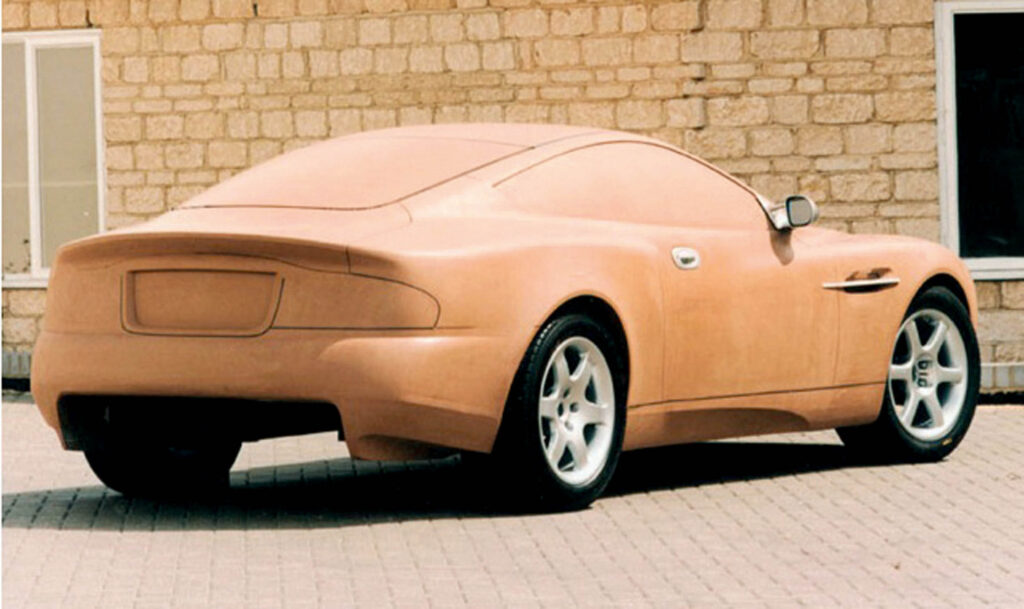
And so began the process of productionising Project Vantage, turning it into the V12 Vanquish, complete with carbonfibre and alloy construction over an extruded aluminium chassis – a far cry from the traditional Virage and V8. ‘We never had a design review. I worked well with Ian Minards, director of product development; he worked with what we asked him to do, but there were obstacles. We’d kept that clay model intact but now we had to make it work with Ford parts. To make Ford’s high-security lock barrels work, the whole body side had to come out by 20mm. I’d pinched the surfaces a little too much. We had no easy way to integrate the indicators with the headlamps, so we used the DB7 Vantage’s lower lamp, with all the functions in it. Our objective was that nobody would notice where we saved money.’
Yet money was found where necessary and, unlike the DB7 with tail lamps cleverly repurposed from the Mazda 323F, the V12 Vanquish ended up with bespoke ones – eventually. ‘The concept car had round lamps and I thought “I’ll sort that one later.” We were asked to find lamps within the Ford group and ended up with Ford Cougar units in a housing. It was difficult to make work. Then, three-quarters of the way through that process, Wolfgang Reitzle – he was boss of PAG then – had a look and said “You can’t use those. I’ll find the money.” So we invested in tail lamps. They were low-volume but old-tech, so not too expensive. I’m glad they weren’t Ford parts; the car deserved unique lights. But when it came to my own car, I re-did them.’ More on that later.
Of course, while an Aston needs to be stunning from outside, its interior is just as important, and again the Vanquish set the template for the next two decades. Candidly, Callum considers it a qualified success.
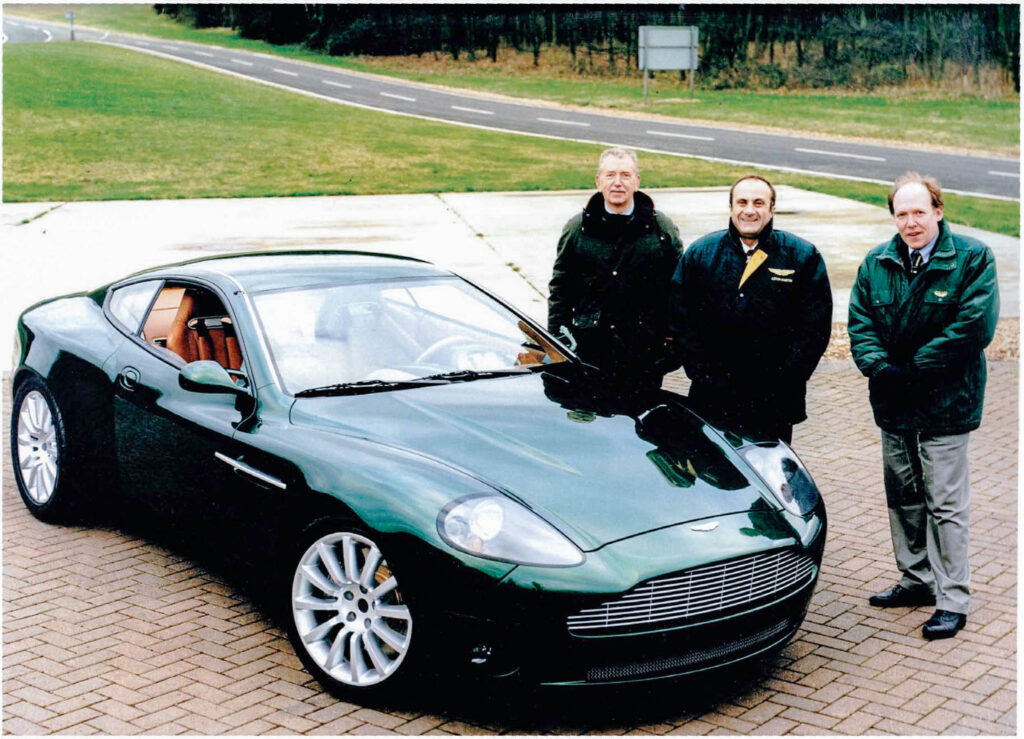
‘It was the most expensive aspect to create from scratch. The doorhandles are Jaguar XK8; I loathe them to this day. And the XK8 HVAC [heating, ventilation and air-con] was a bulky old thing, so the centre console became alarmingly large.’
While TWR had handled work with Project Vantage, the new method of construction (which left behind Parry- Williams’ platform) called for collaboration with Lotus, something that Callum was sensitive about, given that the Vanquish had seen such a personal emotional investment.
‘We worked with Lotus on the chassis, extrusions and nodes, plus carbon crash beams to take some weight out. It worked really well. Lotus carried out the interior feasibility, too; I was indignant and very protective on my trips to Norfolk, but overall it was a good experience.’
Driving the Vanquish today
Now, here we are at Newport Pagnell, home today to Aston Martin Works, which is housed across the road from where the Vanquish was built. Some of those buildings are still there and recognisable, though they no longer belong to Aston, and much of that site has become a housing estate.
Callum had moved to Jaguar when Project Vantage finally became a reality and was launched at Geneva in 2001. ‘The Vanquish was a fait accompli then,’ he says. ‘It was an exciting time; the last new car to be built at Newport Pagnell. There was such a sense of family there. I knew everyone in the offices and was always warmly welcomed. It was a special time; great to be a part of it.’
On the forecourt, outside the glass and marble of the Works showroom, is one of the last of the V12 Vanquishes built, an immaculate Vanquish S, introduced in 2004, with power up to 520bhp from 460, revised suspension, bigger brakes, new wheels, nose cone, boot-lid, front splitter, and redesigned centre console. This one was registered in December 2008, months after production had ended and given way to the DB9 – marking yet another Aston Milestone, as HQ and production had shifted to Gaydon.
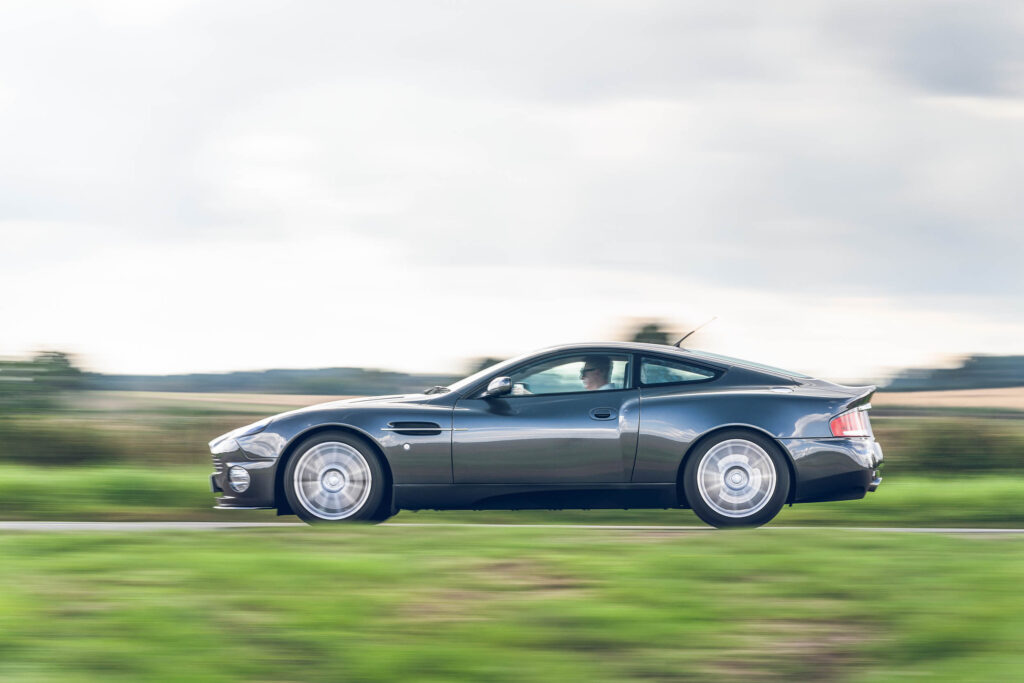
And it’s gorgeous. That vertical forward edge to the rear haunch gives the Vanquish hugely confident stance, its big arches are filled with 19in alloys (10in wide at the rear), the surfacing along the flanks and sills looks machine-age modern, the up-and-over curves that define the front wings plain sexy. Maybe the front is a little DB7 generic, and the tail-lights, while bespoke, are somewhat anonymous – though better that than recognisably pilfered. There’s no doubting that this is Callum’s masterpiece.
With 16,000 miles on the clock, this car rejoices in Meteorite Grey paintwork that gleams in late-summer sunshine as owner Simon Phillips takes me through the starting procedure. Foot on brake, twist the key (yup, one of those funny 1990s Ford things) and pull both paddles until the ‘N’ (for neutral) solidifies in a dot matrix on the dash. Then prod the glassy ‘Start’ button. Your reward? A mellifluous V12 baritone that fills your chest with its presence and barks when you give it some beans. Glorious.
‘It’s a car you have to master, which is satisfying,’ says Phillips. ‘The Vanquish was the first Aston I ever wanted to own – a combination of its brutal styling and the Bond thing.’ Ah yes, the Bond thing. Aston Martin had rekindled its relationship with the 007 franchise, and a Vanquish starred alongside Pierce Brosnan in 2002’s Die Another Day, fitted with machine guns and missiles, as well as a stealth-inducing invisibility mode that led Q to refer to it as the ‘Aston Vanish’. Droll.
No such equipment here, just a slightly cramped cabin and high-set driving seat to get used to. And an absolute stack of torque. In this application, that nearly-6.0-litre V12 is worth 520bhp (the original Vanquish, at 460bhp, was already 10% up on the DB7 Vantage) yet, while 425lb ft brimming at 5800rpm comes across as a bit peaky, it never, ever feels it. Whether or not the back of your mind is niggling about two Mondeo V6s, this Cologne-cast 48-valve quad-cammer sounds every decibel the thoroughbred, and its sub-5.0sec 0-60mph sprint and 200mph top-end capability are supercar-style figures that back up the cocky aural posturing.

IT’S GORGEOUS. THAT REAR HAUNCH GIVES THE VANQUISH HUGELY CONFIDENT STANCE
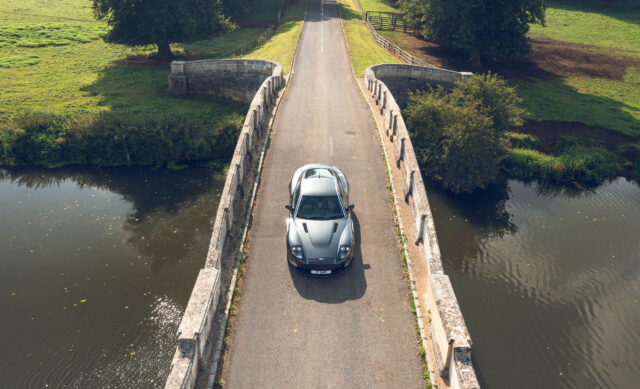
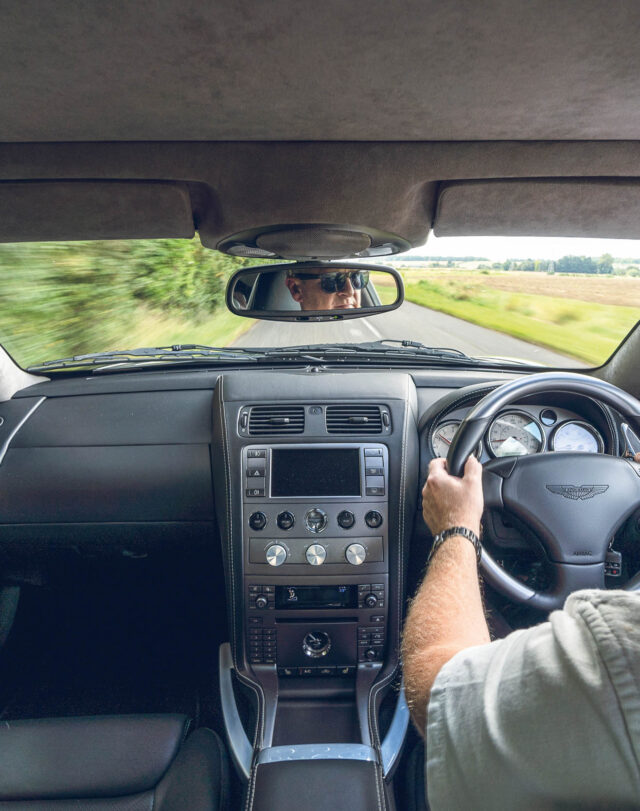
Shifting gears takes a bit of getting used to: this is basically a robotised manual ’box with an automated clutch (just the one). Left to its own devices, if you redline it every time it’ll manage itself swiftly, bobbing your head as it does so. But six ratios and that top speed make that an unlikely scenario on UK roads. Instead you need to time it as you would a manual, lifting fractionally as you pull the right-hand paddle, giving it half a second or so to slot into the next gear before you lamp the throttle again. Otherwise it stumbles clumsily. As for the paddles themselves, they’re slender aluminium wands with a sliver of leather to cushion your fingertips, all beautifully wrought.
The steering feels a touch glutinous, though rarely vague, and the ride is firm, jiggling and occasionally thudding over bumps yet endowing confidence on broad, sweeping roads, which the Vanquish laps up. And it’s more nimble than you’d credit most cars with a kerbweight close to two tonnes, especially once you get used to that shift and make the most of the way it blips the throttle as you select a lower ratio.
Gone is the lorry-like feel of previous Astons, in its place alacrity through corners – you’ll struggle more with seeing past the A-pillars than with roll, turn-in or any lack of grip. It’s less involving maybe than, say, a Ferrari 550, but more refined and entirely appropriate for somebody who drives in Oliver Sweeneys rather than Pilotis. As Car magazine called it, back in 2001: ‘The best executed, best engineered Aston Martin ever? Certainly.’
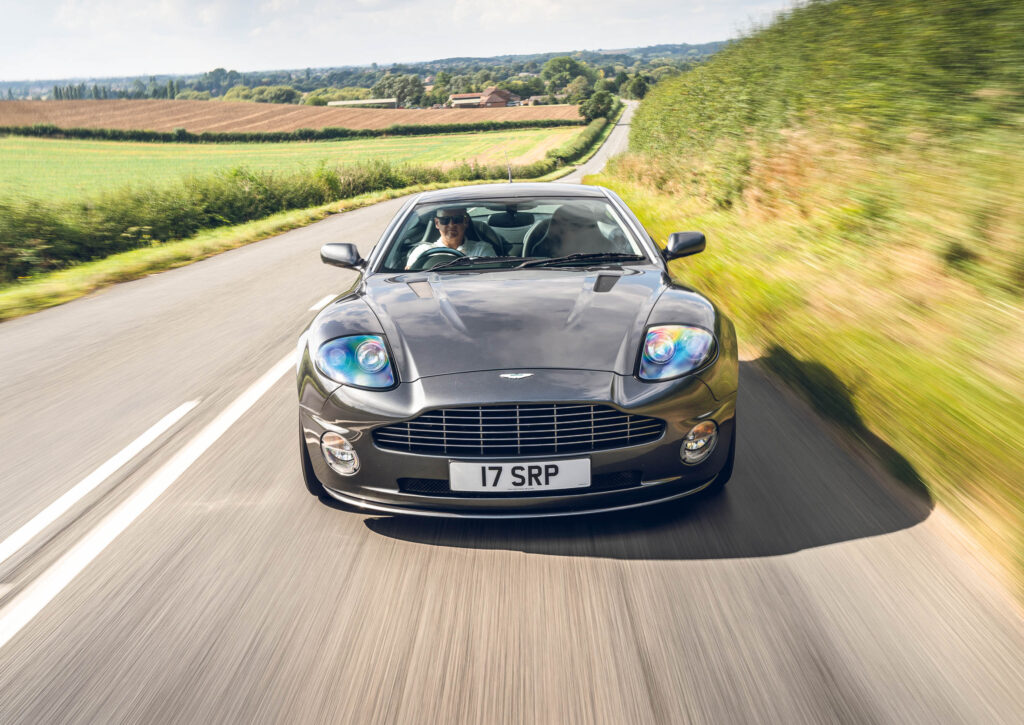
Life with a Vanquish
‘I had the best job,’ says David Alderman, who now restores Aston Martins at Works but was an engineer who worked on V12 Vanquish development. ‘The V-cars all finished in 2000 and the biggest change, moving to the Vanquish, was the arrival of a great load of engineers. I’d gone from simple stuff to the cutting edge, but I brought experience of the marque with me, and I became Ian Minards’ protégé. The first development cars each needed 2000 miles of durability testing, and it was up to me to decide who got the keys. I was the most popular person at Newport Pagnell for a while.’
Alderman is now seeing those original cars coming back into Newport Pagnell for work, but 20 years ago the change was radical. ‘Like comparing tractors with spaceships,’ he says. ‘We knew we were building something special. That hydro-formed aluminium tub – sometimes bits of bonding would break off into the structure. We’d inject expanding foam to seal any gaps, but first we had to cut one apart to work out where all the channels were. I also worked with the post-build road test team. They really were something else to drive.’
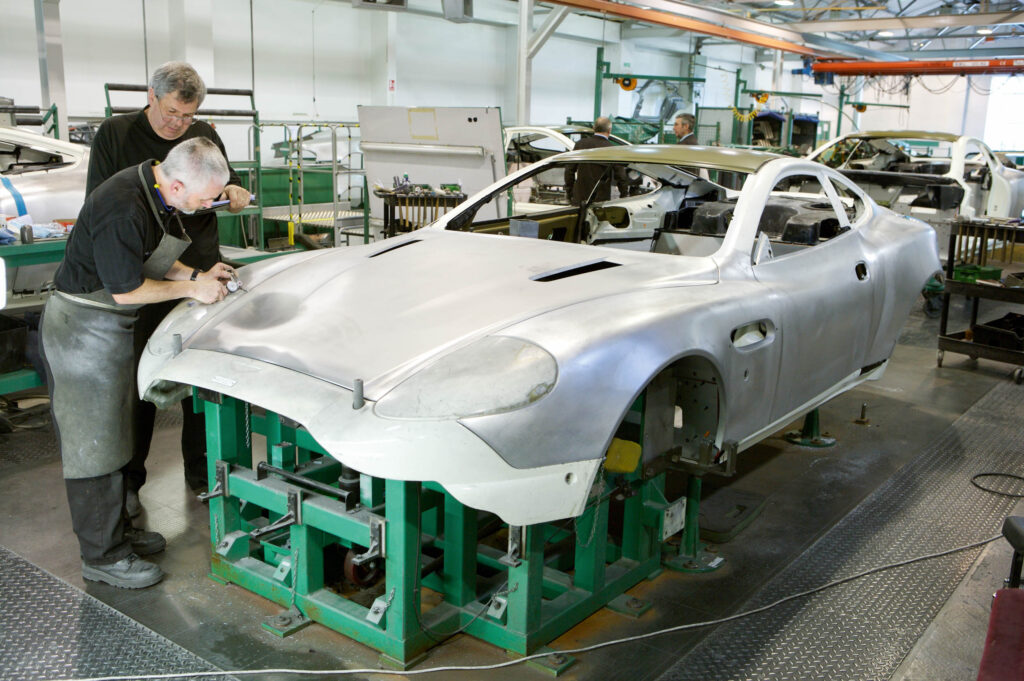
In the trim shop we find Chris Brewer, working at the same bench on which the original leather panels were cut. ‘We still use the same patterns,’ he says. ‘The Vanquish was a bit more intricate to trim than the newer cars, and a lot more thought had to go into that process – each one was slightly different. The wood shop died out with the V-cars, and the dash was trimmed with smaller sections rather than the V-car’s single dashtop. We used to sign our names on the back of trim pieces; I had one in recently and it turned out that I’d trimmed the rear quarter panel and my son had done the seat squab.’
Aston Martin Works president Paul Squires worked in the sales network when the Vanquish was launched, and often visited Newport Pagnell. ‘It was an amazing transformation,’ he says. ‘Most of it looked as it had in the 1960s. Then you’d go through a sliding door to where they were bonding the Vanquish, all newly lit, painted white. It was a massive step-change for the company and signalled that Ford took Aston Martin seriously. Nobody had seen it coming. And now, incredibly, it’s a heritage car.’
Yet while Aston Martin Works is busy returning V12 Vanquishes to how they were when they left the factory, Ian Callum has busied himself improving those elements that Ford’s budget wouldn’t let him perfect originally. ‘You look at your old work and want to re-do it, partly because in the intervening period you’ve become a better designer,’ he says. ‘I bought one and thought I’d make some changes for myself. There was no intention for production.’
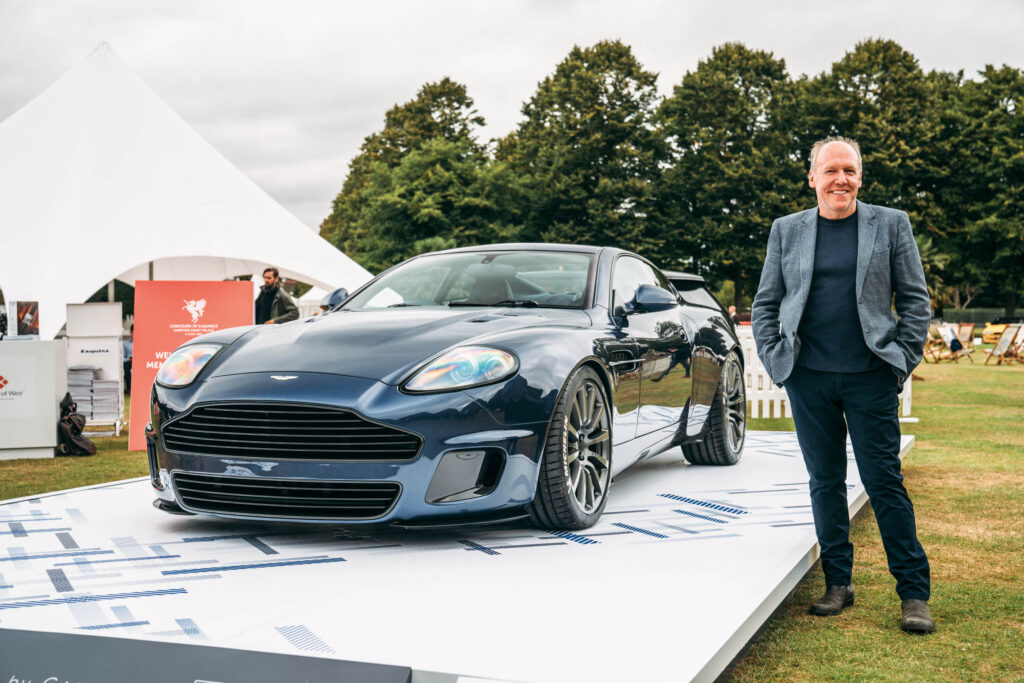
Despite that, Swiss-based specialist in bespoke products R-Reforged teamed up with Callum to produce a series of 25 V12 Vanquishes that feature 350 changes, with only the main body panels and glazing left alone. ‘I never liked the front lamps and was never entirely happy with the interior – a bespoke car would have been done better. So there’s a new front end, and the whole interior is changed, every panel, with a modified centre console that’s much closer in scale to the concept’s. And we finally got rid of those awful doorhandles.’
There are new LED tail lamps, all handmade, and 3D-printed door-mirror housings in place of the old XK8 ones. ‘They looked like boxing gloves. New tech enables you to get to where you couldn’t before.’
One man bought the original Project Vantage and made it road-legal and usable. Meanwhile, Callum and the R-Reforged team have perfected his original vision, 20,000 miles of testing has seen the suspension reworked, and it’s yours if you can afford the man-hours (purportedly £450,000 on top of the £100,000 or so a V12 Vanquish still commands). But one thing remains true, as Callum says: ‘It’s always been one of my favourites. It’s got that life to it.’
And that’s something nobody can disagree with.
2008 Aston Martin Vanquish S specifications
Engine 5935cc V12, DOHC per bank, 48-valve, electronic fuel injection and engine management
Power 520bhp @ 7000rpm
Torque 425lb ft @ 5800rpm
Transmission Six-speed sequential automated manual, rear-wheel drive
Steering Rack and pinion, power-assisted
Suspension Front and rear: double wishbones, coil springs, telescopic dampers, anti-roll bar
Brakes Vented discs, ABS
Weight 1950kg
Top speed 200mph
0-62mph 4.8sec
THANKS TO Aston Martin Works, astonmartinworks.com, and owner Simon Phillips.
